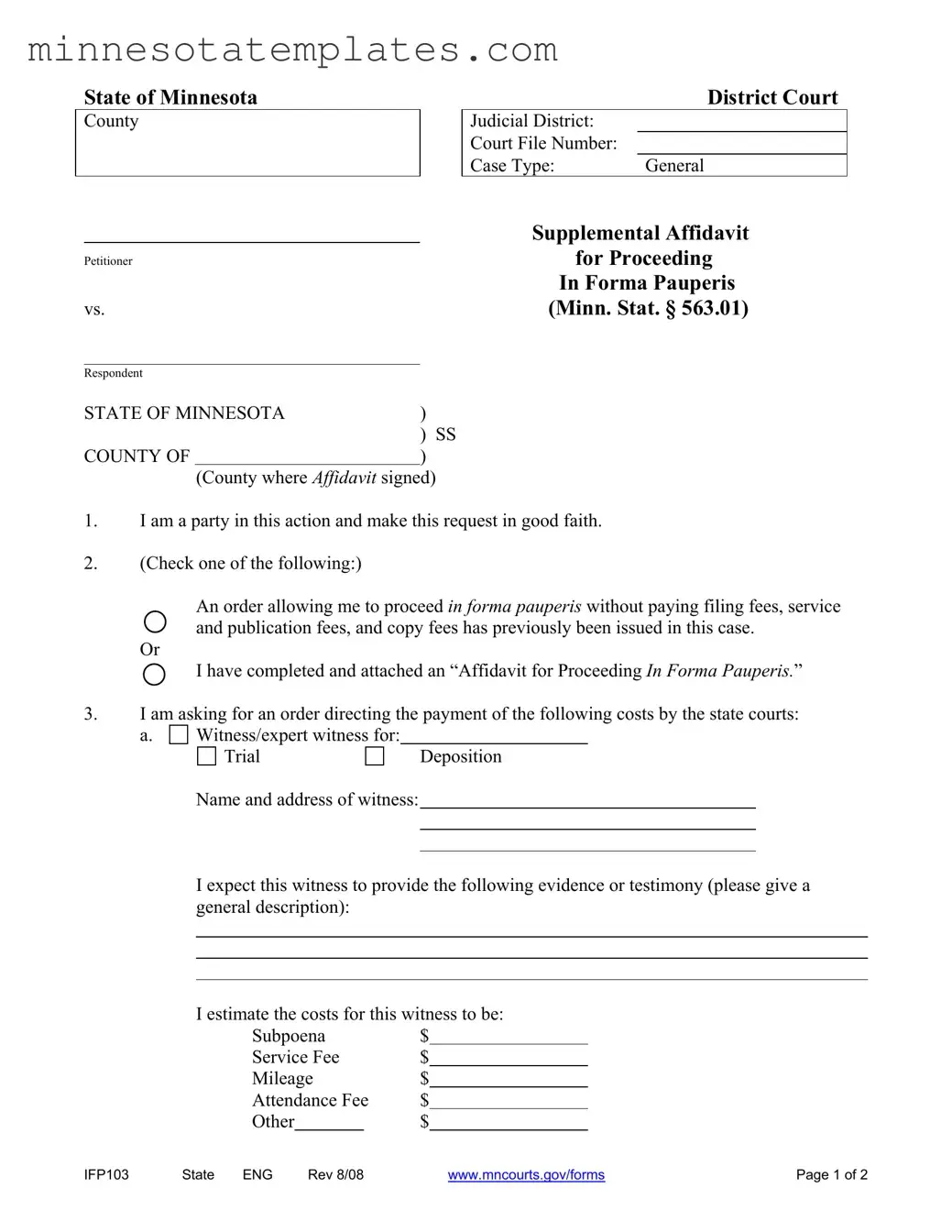When navigating the complexities of the legal system in Minnesota, individuals may find themselves in need of financial assistance to pursue their cases. The Minnesota IFP103 form, formally known as the General Supplemental Affidavit for Proceeding In Forma Pauperis, serves as a crucial tool for those who cannot afford court costs. This form allows petitioners to request permission to proceed without the burden of filing fees, service fees, and other associated costs. It is essential for individuals to demonstrate good faith in their request, either by indicating that a prior order has been issued or by submitting a completed affidavit. The form also requires petitioners to outline specific expenses they seek assistance for, such as witness fees, transcript costs, and other necessary expenses related to their case. By providing detailed estimates and justifications for these costs, individuals can effectively communicate their financial needs to the court. Understanding how to properly complete the IFP103 form is vital for anyone looking to access justice without the financial strain that often accompanies legal proceedings.
